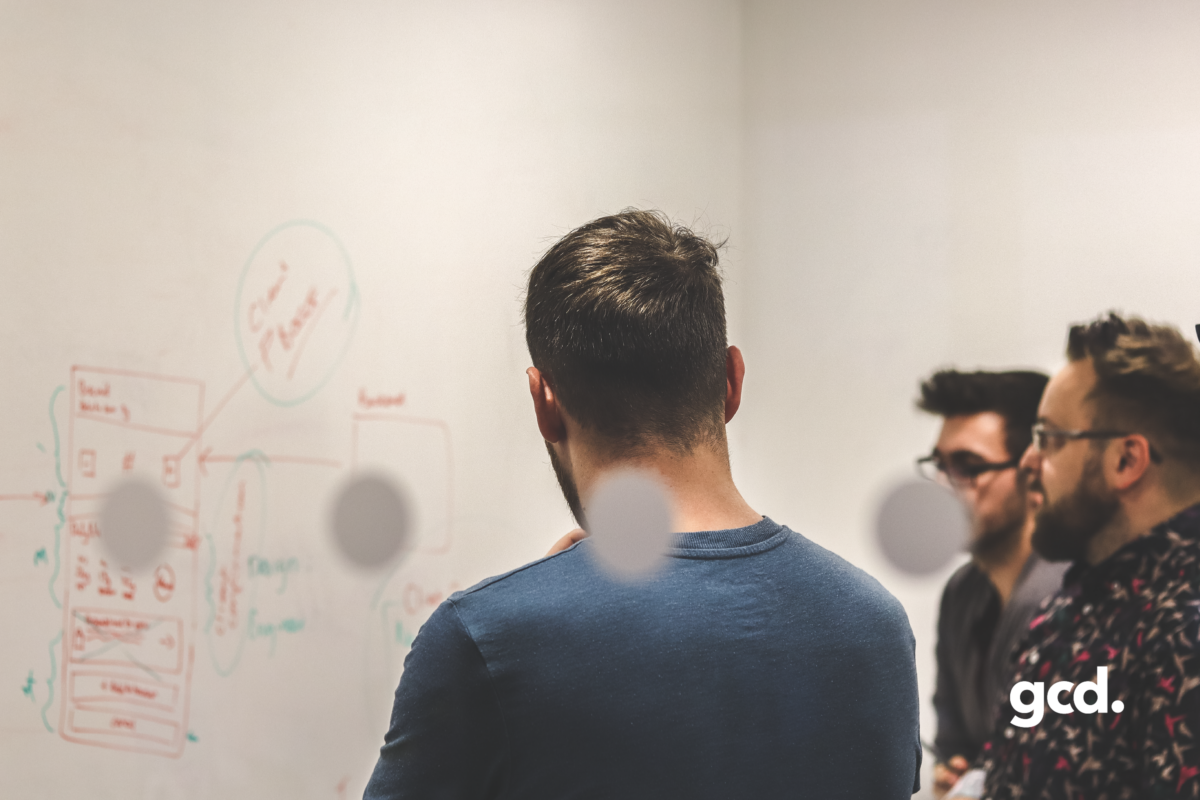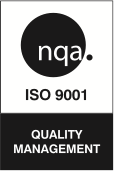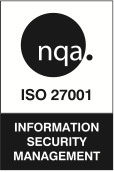Take a minute to have a think about all the products you use in your daily life, I’m guessing the majority have some kind of digital interface. Now think about how many of these interfaces frustrate or annoy you at some stage during the day. I believe (and I’m not alone) that the main reason for these niggles is down to a lack of design process or one which doesn’t consider the user or the context in which they are using the product.
Design as an afterthought
The traditional route of software development is one where design is introduced after product requirements are gathered, features are determined and a plan for development is in place. Usually the designer is brought into the process to add a visual interface to the already existing codebase. Phrases like ‘jazz it up’, ‘add some style’ and ‘make it look pretty’ are often used to describe the job a designer is brought in to do, which is a bit like referring to the job an architect does as ‘drawing a lovely picture of a house’. Design is a specialist skill, like programming, and good design requires a deep understanding of form and content and in the case of interactive products behaviour.
So what’s wrong with the traditional approach? This methodology has grown organically with the software development lifecycle over the past twenty years or so and you could also argue that some very effective software has been created during this time and using this method. More often than not though the process of building, testing and then bringing in design produces a technologically focused solution led by the development team, the marketing team or the customer which doesn’t meet the goals of the person who will actually use the software.
Over the past year or so I’ve become increasingly interested in tweaking and refining our design process into a series of repeatable steps which transform the understanding of our users into software products which meet their needs and balance the needs of the customer and business. I’ve done a fair bit of investigation and research into methods old and new and out of all the methodologies there’s one which stands out…
Goal-Directed Design
Goal-Directed Design by Alan Cooper is a methodology laid out in his book ‘About Face – The essentials of interaction design’. Cooper’s method focuses on behavioural design, which is what attracted me to the book in the first place. It puts users at the centre of the design process and places huge emphasis on understanding the needs and goals of those users and then translating those goals into tasks and activities and ultimately into a more usable end product.
Cooper makes a big distinction between goals and tasks. Goals are motivations for the user and should describe what they are trying to achieve whereas tasks are the steps involved to help them achieve the goal.
Let’s take the example of a typical user of propertynews.com (disclaimer – that’s one of our sites). Let’s say this user is a fifty year old man who is searching for a new family home. We may think that his goal is to find a house quickly and efficiently in a suitable area and within budget. It’s more likely (even if he can’t verbalise it) that his goal is to find a new home where his family can be happy for many years. There’s a big distinction between these two statements. If we follow the first statement we place the focus on the technology and build a product which can search quickly and efficiently. If we follow the second statement however we remove the focus on the technology and can build a product which can truly affect the happiness of the user in a meaningful way.
This way of looking at things really changes your mindset. It lets you focus on the bigger picture always instead of getting bogged down with the implementation. The whole process of Goal directed design is broken down into six steps.
1. Research
In this stage you collect qualitative data about the users or potential users through field studies and interviews. You carry out a competitor analysis and interview key stakeholders to gather their requirements. When you’re finished you should be left with a set of instructions which describe how the product could be used.
2. Modelling
The modelling stage can be broken down into two parts. In part one you define the domain model by building on the workflow patterns from the research stage. In part two you define the user model through the use of personas or key archetypes which represent identifiable groups of users.
3. Requirements Definition
Stage three is critical for providing that link between the user model and other models. In this stage you focus on context scenarios to help define ‘a day in the life’ of a persona. You also consider business goals, technical considerations and brand guidelines during this stage but it’s the context scenarios which really make a big impact to the way you think and help generate a ton of ideas you might not have considered before.
4. Framework Definition
During the framework definition stage you create the overall product concept and define the behaviour and visual design of the product. You can also create prototypes during this stage.
5. Refinement
In the refinement stage you place more focus on detail and refinement and at the end of this stage it’s recommended that you create your design documentation.
6. Development Support
No matter how clear the vision is for the product things can and do change during development, budgetary and timeline concerns can affect which features get taken away or which new ones get added and it’s critical that the designer is on hand to offer advice and to make sure the overall design quality doesn’t get compromised.
Whew.
Goal directed design is a detailed and lengthy process but it’s one that I’m very drawn to because of it’s focus on a deep understanding of the users goals and not just the tasks they perform. Notice how the visual design stage only begins in stage four of the process. The real design work is done in the first three stages, the latter stages just put everything together in a meaningful way. I’m not arguing against aesthetics, and neither is Alan Cooper in this methodology but it reinforces a view which I have always held in that the design in this industry is mostly non-visual. That’s a difficult idea for some clients to swallow, especially when budgets are concerned and it’s difficult to prove until you see the results of a product designed in this way. Take the Apple TV for example, there are many products on the market which offer more features and higher performance but in my opinion none of them really come close to the Apple TV achieves in terms of an overall happiness factor and is a great example of a product in which the goals and not just tasks of the user were considered from the beginning.
Time to change
The world has changed dramatically in the past fifty years. Design for complex digital products is not the same as industrial or manufacturing design and it shouldn’t be approached in the same way. If we’re designing something that a user will interact with, doesn’t it just make sense to find out as much as possible about that person including what motivates them to use our product in the first place. I think that ultimately the success of any product can be defined by the amount of happy users it has and the best way to ensure these users are happy is to find out what motivates them and what their goals are. If we can make that shift then we can all live in a world where we can truly make technology work for us rather than the other way round.


